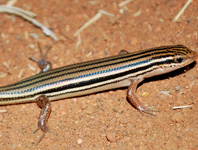Abstract
The strigeid digenean species Australapatemon burti (Miller, 1923) (Trematoda: Digenea: Strigeidae) was originally described from North America, but recorded in the Neotropical region (Drago et al. 2007; Hernández-Mena et al. 2014; Blasco-Costa et al. 2016) and in Central Europe (Faltýnková et al. 2007). In Europe, this species is rare, and there is not much information about its range (Faltýnková et al. 2007; Soldánová et al. 2012). Australapatemon burti has a complex life cycle with three larval stages, two of which (sporocyst and cercaria) use several species of freshwater snails, and the third stage (metacercaria) use non-specific host hirudineans (Dubois 1968; Davies & Ostrowski de Núñez 2012; Blasco-Costa et al. 2016). Adult flukes are parasitic in the intenstines of various waterfowl species, such as ducks and swans (Drago et al. 2007; Hernández-Mena et al. 2014). Currently, the molecular data on this parasite species includes only nucleotide sequences of four adult specimens from Mexico (Hernández-Mena et al. 2014). Their hosts were Mexican duck, Anas diazi Ridgway, American Wigeon, Anas americana Gmelin, Cinnamon Teal, Anas cyanoptera Vieillot, and Ruddy Duck, Oxyura jamaicensis (Gmelin) (Anserformes: Anatidae).
References
Blasco-Costa, I., Poulin, R. & Presswell, B. (2016) Species of Apatemon Szidat, 1928 and Australapatemon Sudarikov, 1959 (Trematoda: Strigeidae) from New Zealand: linking and characterising life cycle stages with morphology and molecules. Parasitology Research, 115, 271–289.
http://dx.doi.org/10.1007/s00436-015-4744-0Davies, D. & Ostrowski de Núñez, M. (2012) The life cycle of Australapatemon magnacetabulum (Digenea: Strigeidae) from Northwestern Argentina. Journal of Parasitology, 98, 778–783.
http://dx.doi.org/10.1645/GE-3054.1Drago, F.B., Lunaschi, L.I., Hinojosa-Saez, A.C. & González-Acuña, D. (2007) First record of Australapatemon burti and Paramonostomum pseudalveatum (Digenea) from Anas georgica (Aves, Anseriformes) in Chile. Acta Parasitologica, 52, 201–205.
http://dx.doi.org/10.2478/s11686-007-0040-1Dubois, G. (1968) Synopsis des Strigeidae et des Diplostomatidae (Trematoda). Mémoires de la Société Neuchâteloise des Sciences Naturelles, 10, 1–258.
Faltýnková, A., Našincová, V. & Kablásková, L. (2007) Larval trematodes (Digenea) of the great pond snail, Lymnaea stagnalis (L.) (Gastropoda, Pulmonata) in Central Europe: a survey of species and key to their identification. Parasite, 14, 39–51.
http://dx.doi.org/10.1051/parasite/2007141039Faltýnková, A., Sures, B. & Kostadinova, A. (2016) Biodiversity of trematodes in their intermediate mollusc and fish hosts in the freshwater ecosystems of Europe. Systematic Parasitology, 93, 283–293.
http://dx.doi.org/10.1007/s11230-016-9627-yHernández-Mena, D.I., García-Prieto, L. & García-Varela, M. (2014) Morphological and molecular differentiation of Parastrigea (Trematoda: Strigeidae) from Mexico, with the description of a new species. Parasitology International, 63, 315–323.
http://dx.doi.org/10.1016/j.parint.2013.11.012Johnson, M., Zaretskaya, I., Raytselis, Y., Merezhuk, Y., McGinnis, S. & Madden, T.L. (2008) NCBI BLAST: a better web interface. Nucleic Acids Research, 36, W5–W9.
http://dx.doi.org/10.1093/nar/gkn201Miller, H. M. Jr. (1923) Notes on some furcocercous larval trematodes. The Journal of Parasitology, 10, 35–46.
http://dx.doi.org/10.2307/3270887Schniebs, K., Georgiev, D., Glöer, P. & Hundsdoerfer, A.K. (2015) A molecular genetic evidence of the occurrence of the freshwater snail Radix lagotis (Schrank, 1803) (Gastropoda: Lymnaeidae) in Bulgaria. Ecologica Montenegrina, 3, 29–39.
Schniebs, K., Glöer, P., Vinarski, M.V. & Hundsdoerfer, A.K. (2013) Intraspecific morphological and genetic variability in the European freshwater snail Radix labiata (Rossmaessler, 1835) (Gastropoda: Basommatophora: Lymnaeidae). Contributions to Zoology, 82, 55–68.
Soldánová, M., Kuris, A.M., Scholz, T. & Lafferty, K.D. (2012) The role of spatial and temporal heterogeneity and competition in structuring trematode communities in the great pond snail, Lymnaea stagnalis (L.). Journal of Parasitology, 98, 460–471.
http://dx.doi.org/10.1645/GE-2964.1Tamura, K., Stecher, G., Peterson, D., Filipski, A. & Kumar, S. (2013) MEGA6: Molecular Evolutionary Genetics Analysis version 6.0. Molecular Biology and Evolution, 30, 2725–2729.
http://dx.doi.org/10.1093/molbev/mst197Vinarski, M.V., Aksenova, O.V., Bespalaya, Y.V., Bolotov, I.N., Schniebs, K., Gofarov, M.Y. & Kondakov, A.V. (2016) Radix dolgini: The integrative taxonomic approach supports the species status of a Siberian endemic snail (Mollusca, Gastropoda, Lymnaeidae). Comptes Rendus Biologies, 339, 24–36.
http://dx.doi.org/10.1016/j.crvi.2015.11.002

